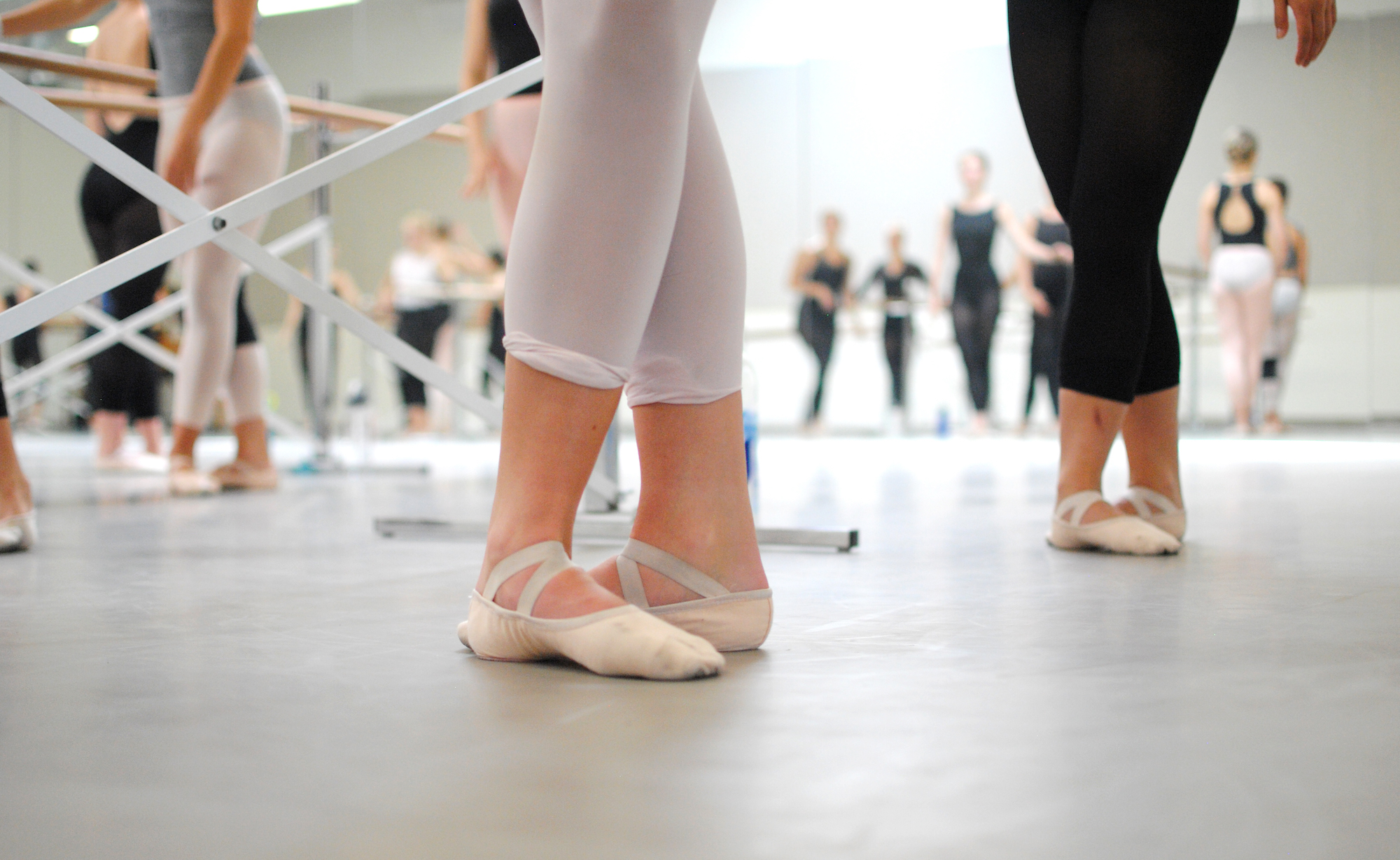
10 Oct 3 Key Exercises to Improve Turnout
Rather than jamming your feet into an uncomfortable (and unsustainable) position at the barre, it’s always important for dancers at any level to progressively improve their turnout and to build awareness about the muscles, joints, and ligaments responsible for your true turnout. Here are some great exercises to practice on your days off, to help strengthen your muscles and prepare your turnout for your next ballet lesson:
Rotator Activation
This simple exercise isolates turnout from the hips, says the Harkness Center for Dance Injuries’ Emily Sandow. Lie on your back with legs in the air and feet flexed. Rotate from parallel into first position and back again, seeing how the upper leg rotates and the feet follow. Feel the muscles at the backs of your legs—where the elastic of your leotard’s leg seam is—and your inner thighs engaging to make the rotation happen. Notice how you can turn out without using your bigger gluteal muscles.
Clamshells
Physical therapists recommend doing this common exercise against a wall to prevent tipping the pelvis backward or forwards. Lie on your side with your back and feet flat against a wall, both knees bent and the legs stacked. Open your top knee as far as you can. Hold this position before slowly bringing your knee down. Repeat until the point of fatigue and switch sides.
Hip Abduction with External Rotation
Still lying with your back against a wall, bend your bottom leg with your foot flat against the wall and straighten your top leg. Turn out the top leg and lift it slightly (like a small dégagé), keeping it firmly pressed against the wall. Progressively lift your leg an inch or two higher at a time, holding at each level for 1–2 seconds. Go as high as you can go without losing contact with the wall. Lower slowly with control, maintaining the turnout you achieved on the way up. Holding your placement against the wall going both up and down is key for pelvic alignment. Start with 6 reps per side, aiming for quality over quantity. To reproduce this feeling standing, stand in parallel with a paper plate under each foot (or rotation discs if you have them) and rotate to first using the same muscles.
Don’t overdo it!
It’s been observed in dancers that spending hours each day in turnout causes the external rotators to shorten, tighten, and work less effectively. To maximize your potential turnout, balance stretches (like the figure four stretch and pigeon pose) with strength work and spend time not turned out. There’s no need to walk with your feet turned out; putting excessive stress on your joints to achieve what would seem like faster results can lead to chronic overuse of those muscles. Find a balance between your turnout steps and routines and your parallel exercises, to create muscle memory that is balanced and healthy for your body.
